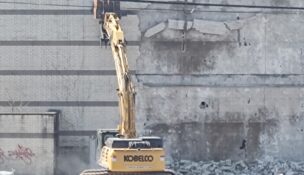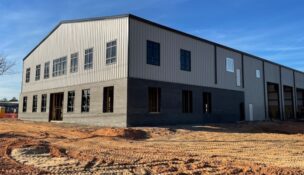Construction presses on amid new coronavirus crisis
Melinda Waldrop //April 14, 2020//
While construction companies soldier ahead in the COVID-19 crisis, a new industry study is sounding alarm bells about potentially rougher roads ahead.
An Associated General Contractors of America study conducted from March 23-25 and released March 27 found 39% of contractors reported that project owners have halted or canceled current jobs. The organization warned that the cancellations were likely to result in “massive” jobs losses in a statement issued just a month after it released data showing that 42 states had added construction jobs in February.
Another survey released April 3 seemed to bear out those fears, finding that 27% of responding firms had laid off workers. Other numbers jumped in just a week: 55% reported halting or canceling current jobs, while 59% reported delays or disruptions, up from 45% the previous week.
On April 10, the AGC released on online survey (.pdf) that found nearly 40% of construction companies had laid off workers.
“The abrupt plunge in economic activity is taking a swift and severe toll on construction,” Ken Simonson, the association’s chief economist, said in a news release. “The sudden drop in demand stands in sharp contrast to the strong employment levels this industry was experiencing just a few weeks ago.”
Shortages of material and parts and equipment, including personal protective equipment, were reported by 35% of respondents in the April 3 survey, up from 23% the week before.
Mark Hood, president and CEO of Columbia-based Hood Construction, has experienced some of those issues firsthand.
“We have shut down some jobs,” said Hood, who said his company is operating at around 80% of its normal capacity. “We do a lot of healthcare work, and the hospitals have asked us to stop our projects and leave, and we fully understand that and endorse that. It makes me feel better not to have my people inside the hospitals right now.”
The March 27 survey also found supply chain interruptions, with 35% of firms reporting that suppliers had notified them or their subcontractors that some deliveries would be delayed or canceled. That increased to 38% in the April 3 survey.
“We’re anticipating supply chain issues,” Hood said. “We really don’t know what those are yet. We suspect that’s going to happen, because there are some manufacturing facilities that we’re getting word that will shut down at some point in time. Some already have, some for just a couple of weeks.”
A lack of government workers needed for site inspections had delayed projects for 16% of the survey respondents in both March and April — a problem Paul Mashburn, CEO of Columbia-headquartered Mashburn Construction, can testify to.
“Our biggest impact is with inspections — inspection departments that are either delaying inspections or plan reviews or they are having a third-party inspector do them,” Mashburn said. “We’ve had some delays associated with inspections, (but) we have not halted any projects. All of our projects are continuing to work.”
Construction has been classified as an essential business which can continue to operate in federal, state and local emergency ordinances. A March 25 emergency ordinance ordering all nonessential businesses in Charleston to close exempted construction, and a day later, the Columbia followed suit, with an essential-
business list including the industry. On March 28, the Department of Homeland Security issued guidance clarifying construction’s role in supporting critical infrastructure, and an executive order from S.C. Gov. Henry McMaster on March 31 further emphasized construction as essential.
“Big-picture, construction is 10% of the GDP each year,” Hood said. “We’ve shut down so much of the economy already with the restaurants, the bars, the entertainment venues. We’ve shut down so much of it. We’ve got to keep money flowing somewhere into the economy.”
The AGC noted construction activity “can continue to occur in a way that protects workers and the general public from the spread of coronavirus,” a point echoed by Hood and Mashburn. Hood said the industry often practices social distancing as a matter of course, with a bulldozer operator grading land 50 yards away from a driver hauling debris in a dump truck.
Mashburn also noted logistical reasons for construction projects to continue. “If you’re working on a road, you can’t just remove the crews and send them home and then leave a big hole in the road,” Mashburn said. “And if you’re looking at a downtown site that’s under construction, you’ve got maybe a crane set up that’s tens of thousands (of dollars to rent) every month. Do you just let that crane sit there? Then it becomes dangerous over time. There’d be all kinds of different complexities if you just shut down job sites.”
Legal considerations would also come into play, Mashburn said. “Every project has delay clauses,” he said. “So if all job sites shut down right now, the court systems would be inundated a year from now with cases trying to figure out who pays for the delay and what was the cause.”
Finding a new normal
The continuing construction work doesn’t mean things haven’t changed.
“We’ve changed everything in our day-to-day operations,” Mashburn said. “We’ve implemented social distancing in our corporate offices. We’ve got many people working from home, and we’ve got policies and procedures around that. Hand sanitizers have been shipped to all job sites. We’re having subcontractors come in and do wipe downs on offices and job sites. We’re changing with the times.”
Both companies are also working around the changing schedules of employees who may have additional childcare responsibilities with state schools closed through April. “I’ve got a young lady that works with me that’s coming in at 5 o’clock in the morning and going home at 9 to work four hours in the office and then spend the rest of the day at home with her children,” Hood said. “We’re trying to be very flexible with those people.”
Hood also anticipates accelerated changes already evident in the industry focused on addressing another finding of the AGC survey: the shortage of craftworkers cited by 18% of respondents on March 27 and 28% the next week. “We’ve been fighting the shortage of workers for three years now,” Hood said. “You can take someone who is used to working in a restaurant and you can train them to go stock shelves at Walmart pretty quickly. It’s hard to teach them how to put a duct together in a rapid form, or how to do plumbing.”
While he said the construction industry has done a good job of emphasizing its competitive pay and benefits to attract younger and nontraditional workers, Hood said it had also taken steps to address that shortage, such as relying more on robotic operations and modularization of materials.
“I think it will be interesting to see what the new norm is coming out of this,” said Hood, who has also been regularly participating in online meetings in the past weeks. “That may alter the way we do business going forward, and that may be a good thing. It will be interesting to see how many businesses think people can work from home that didn’t think they could before.
“It’s really hard for my carpenters to work from home. That mason actually needs to be there to lay that block, but 25 years from now, that may not be the case. We may have somebody running a robot to lay those blocks.”
While day-to-day operations are largely still humming along, both CEOs are concerned about backlog, or the amount of future work measured in dollars that construction companies are contracted to perform.
“Some projects that are on the horizon that may be starting in the second or third quarter, we’re seeing them being put on hold for several months until this passes. That may be the banks or the lenders just saying let’s put it on hold for 60, 90 days,” Mashburn said. “You’ve always got to build your backlog in order to keep work in the pipeline.”
Hood tries to view the current concerns in a historical context. “I’m always concerned about the next project. I’ve been doing this for 34 years and I still worry about that every day,” he said. “Does this increase that worry a little bit? Yeah, but we’ve been through some tough times before. Our industry got hit so hard with the recession back in ’09 and ’10.”
Even then, Hood said, his company did not lay off any workers, and it does not intend to now.
“We’re dealing with employees that are reading too much at night, that are worried,” he said, adding that the company has set up a group text system to quickly disseminate information to its employees. “(We’re) going around and reassuring them: ‘Our firm has never had a layoff in the history of the company, so quit reading about everybody’s going to get laid off. That’s not what’s going to happen here.’ ”
Like Hood, Mashburn takes comfort in the aspects of normalcy provided by being able to keep working.
“I feel very sorry for a lot of my friends that are in the food and beverage business and other businesses that can’t work,” Mashburn said. “The school systems and restaurants and bars, any sort of social activities, convention centers … hotels. Our hotel friends — we build a lot of hotels — and they were at 90% occupancy, and now they’re down below 5%.”
Mashburn, however, is working to stay positive about the construction industry and the economy as a whole. “This is America, and we’re going to get through this,” he said. “ … I believe it’s going to be over sooner rather than later. And I strongly feel that the economy is going to bounce back.”
This article first appeared in the April 13 print edition of the Columbia Regional Business Report.
t
















